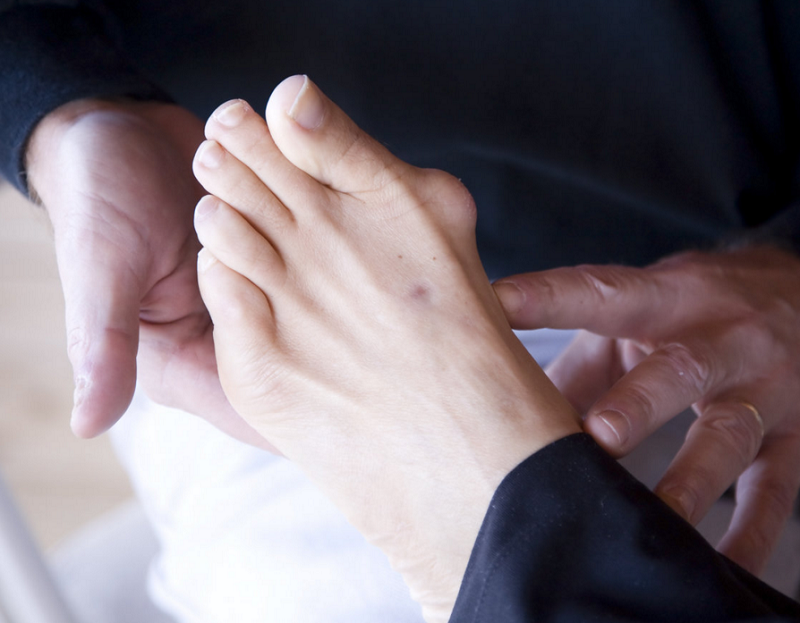(advertisement)
Treatment for Bunionettes
Bunionettes are bony bumps that protrude from the fifth toe. When initial non-surgical treatment is not successful, surgical removal may be required.
A bunionette, also known as a tailor’s bunion, is an abnormal, bony bump which appears on the outer side of the fifth toe. Like bunions, the more commonly known protrusions that appear on the big toe, they may begin as a small painless bump but can grow into larger and potentially very painful protrusions. Following the appearance of a small bump, other early symptoms of bunionettes are inflammation and redness around the small toe.
What Causes Bunionettes?
Bunionettes are the result of inflammation of a small bone in the little toe. It is thought that being prone to bunions and bunionettes can run in families and additionally, those with arthritis are more likely to develop bunionettes. However, bunionettes are most frequently caused by wearing shoes that are too narrow or tight around the toes and therefore wearing roomier, more comfortable shoes can prevent this from occurring.
Non-Surgical Treatment for Bunionettes
Initial treatment is non-surgical, and includes wearing wider shoes or those with specialised inserts to create padding. The pain caused by bunionettes can be treated using common anti-inflammatory medication available over the counter such as aspirin and ibuprofen. If non-surgical treatment is not successful, or if the problem becomes more severe and wearing shoes comfortably is no longer possible, then surgery may be required to reduce the bunionette.
(advertisement)
Surgical Removal of Bunionettes
Usually, surgery involves removing the protruding soft tissue and the bone of the bunionette. For those who are a little worse affected, it may be necessary to cut the bones of the fifth toe to straighten it out. More precise surgery details specific to the type and severity of the bunionette can be found here.
You will need rest and relaxation following surgery and should not put weight on the affected foot for a number of weeks, depending on your surgeon’s recommendation. You will also need to wear a surgical shoe, splint or boot in order to protect your foot while it is healing and it may also be necessary to use crutches. While recovering from surgery, you may be advised to carry out a small number of knee and ankle exercises to maintain joint motion and flexibility. Be aware that swelling of the foot may take anywhere from three to 12 months to return to normal. For more information on bunion treatments and surgery options, or to speak with a specialist, click here.
Potential Complications of Bunionette Surgery
Potential complications following surgery are rare. Problems may include bleeding from the wound, nerve injury around the fifth toe or poor wound or bone healing in some cases. Additionally there is the small possibility of the bunionette returning. Some people still experience symptoms after surgery, so consider the option carefully. For those with an infection in the bunionette, or with poor circulation, surgery is not recommended as this may cause problems with the healing process after surgery.
When patient advice is followed carefully, surgery for bunionettes is successful in almost all cases and without complication. If required, it is therefore an effective and simple way to provide pain relief and relief from the other symptoms of bunionettes.
(advertisement)

